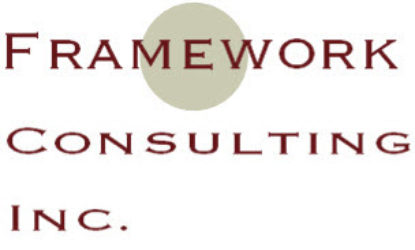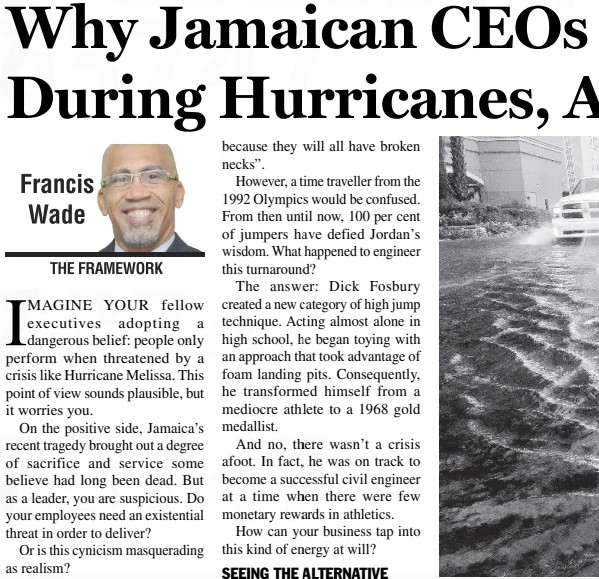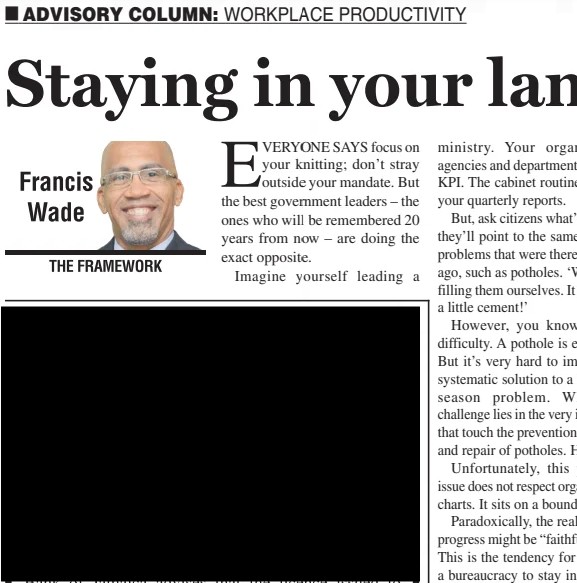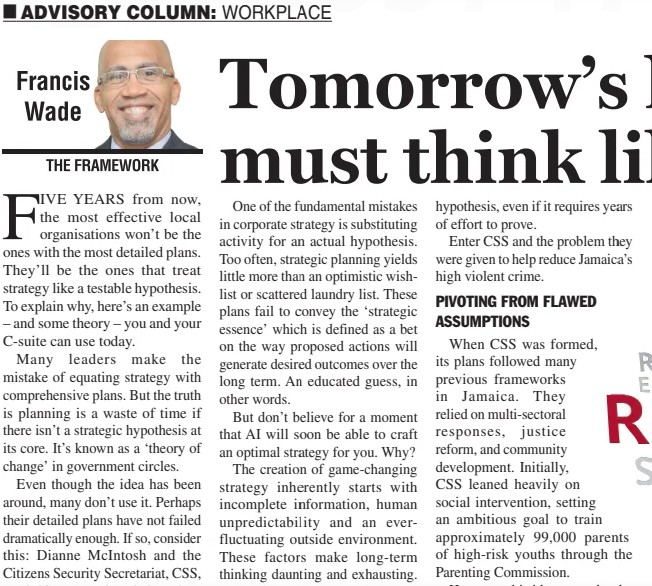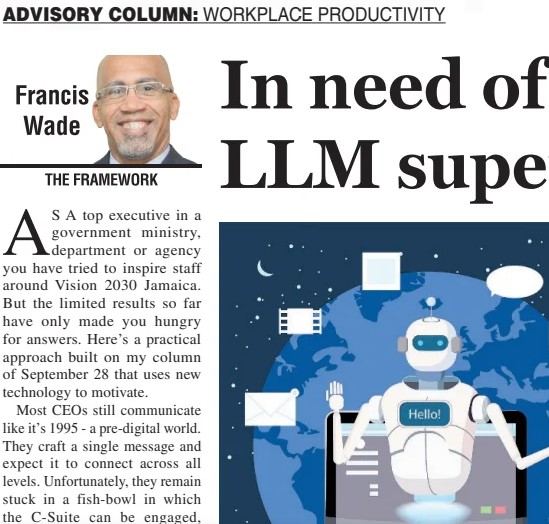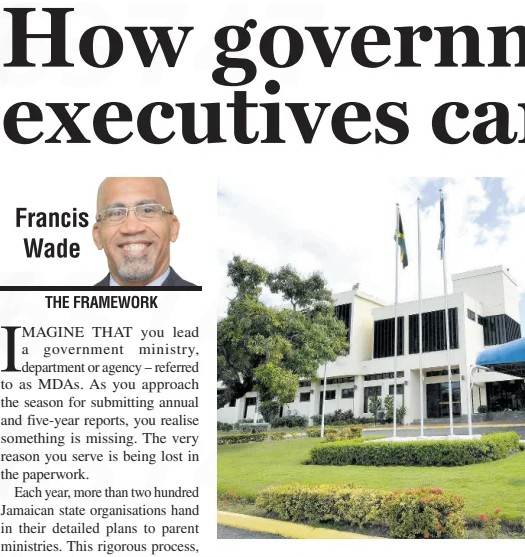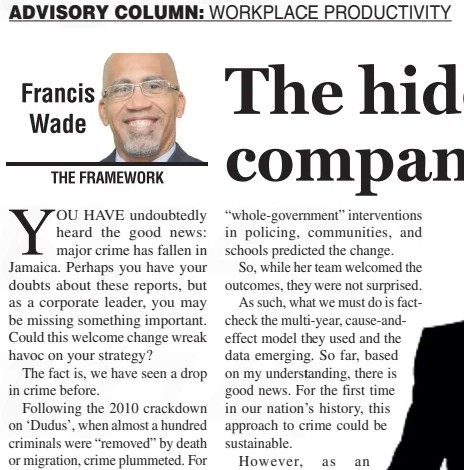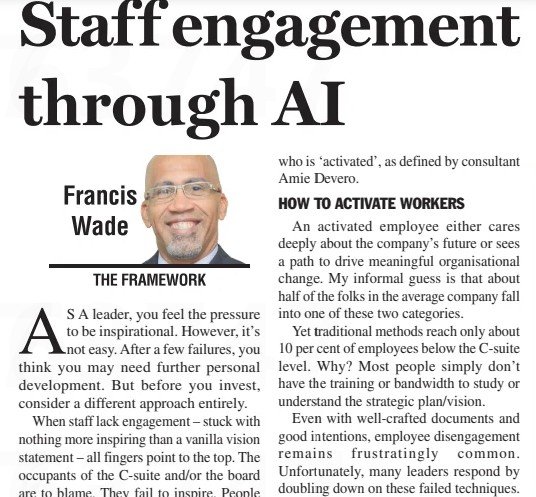Imagine your executives are adopting a dangerous belief: people only perform when threatened by crisis. When the building is on fire, performance soars. When competitors attack, teams mobilize. When survival is at stake, magic happens.
This point of view sounds plausible, but it should worry you.
Yes, crises can bring out extraordinary levels of commitment and sacrifice. But as a leader, you should be suspicious. Must your employees face an existential threat to deliver their best work?
Or is this just cynicism masquerading as realism?
Consider it an admission of leadership failure. Deep down, you don’t want to manufacture drama to fire people up. And you don’t want to hype fake urgency (“This is our make-or-break moment!”) just to get people moving.
Fortunately, there’s a source of “clean” inspiration available to you: perpetual category design.
Case in Point
Until the 1968 Mexico Olympics, the world accepted certain limits on high jump techniques. Jumpers went over the bar face-down, in variations of the straddle or scissors technique. Going head-first or face-up? Unthinkable.
In fact, USA Olympic coach Payton Jordan warned that such a technique would “wipe out an entire generation of high jumpers because they will all have broken necks.”
Yet a time traveller from the 1992 Olympics would be utterly confused. By then, 100% of jumpers were defying Jordan’s accepted wisdom, arching backwards over the bar in what became known as the Fosbury Flop.
What had happened?
Dick Fosbury created a new category of high jump. Working almost alone as a high school student, he experimented with an approach that took advantage of recently introduced foam landing pits. Over time, he transformed from a mediocre athlete into a 1968 gold medallist who revolutionized his sport forever.
And no, there wasn’t a crisis afoot. No Olympic committee threatened to eliminate high jump. No injury forced his hand. He was simply a college student on track to become a civil engineer, competing in an era when track and field offered few monetary rewards.
He innovated because the possibility excited him.
Your Employees Want This
In your organization, there’s a special kind of employee who understands this possibility. They’re frustrated because executives don’t. You’ll hear them complain that leadership thrives on the adrenaline of surprise disruptions, that short-term firefighting crowds out long-term thinking.
They’ll point out something more troubling: crisis-addiction actually creates more crises. It’s a self-fulfilling prophecy.
Consider the pattern: organizations that lurch from emergency to emergency often discover their problems took years to develop. The talent shortage that hits during a critical launch. The technology debt that cripples during expansion. The cultural dysfunction that surfaces when pressure mounts.
These weren’t surprises. Someone saw them coming. Someone raised concerns. But leadership was too busy fighting the last fire to prevent the next one.
Category Design as Alternative
What if those organizations had practiced category design instead?
Category design is a strategic planning method for achieving breakthroughs rather than incremental improvements. It involves creating and dominating brand new business categories, rather than competing in existing ones crowded with rivals. By seeking to make a fundamentally different kind of impact, a new category unlocks fresh value.
Some organizations are forced into new categories others define. Think of how Netflix forced Blockbuster to reckon with streaming, or how Tesla pushed traditional automakers toward electric vehicles. These transitions are painful when someone else designs the new category.
A tiny few don’t wait for crisis or competitive pressure. Instead, they design new categories proactively, committing themselves to long-term transitions. With pre-emptive actions, they craft a new landscape while others are still defending the old one.
Perpetual Category Design
However, there’s a tendency for companies to over-focus on single innovations, treating competitive advantage as if it were a one-time occurrence. The best companies think differently.
They always have a 15-30 year vision and strategy in play, working behind the scenes where competitors can’t see it. As soon as they accomplish a major milestone, they revise their plans and set new targets.
This is the only way to transcend the human tendency to leap big hurdles, then lose the capacity to imagine further obstacles. Without perpetual category design, organizations stagnate after victories, endlessly reciting prior successes. Their constant chest-beating gets in the way of fresh thinking.
To help your organization avoid this trap, follow these steps inspired by the Category Pirates:
Name the current category game. What category are you and your competitors playing in today? What are its defining rules and assumptions?
Dive deep into unmet needs. What do your customers or stakeholders truly need that no one is adequately addressing? Where is everyone solving the wrong problem?
Frame a new point of view. What different lens or perspective reveals new possibilities? What becomes possible when you reject conventional wisdom?
Name your new category. Give your different approach a memorable name that captures its distinctive value.
Build a long-term vision and strategy. Map the 15-30 year journey from here to category leadership. Make it concrete enough to guide decisions.
You may not replicate the high energy of crisis response. Few can sustain that.
But you will have defined something more valuable: a sustainable, renewable source of motivation. When done well, it creates immediate action that feels as urgent as emergency response—without the accompanying disaster.
Crisis creates urgency by making the present unbearable.
Category design creates urgency by making the future irresistible.
Go Deeper: LLM Prompts for Category Design
Prompt 1: Diagnose Your Crisis Addiction “I lead a team/organization in [your industry]. Help me identify signs that we might be addicted to crisis-driven performance. Ask me 5-7 diagnostic questions about our leadership patterns, planning practices, and team behaviors. After my responses, analyze whether we’re running on crisis energy vs. sustainable inspiration.”
Prompt 2: Map Your Current Category “I work in [describe your industry/sector]. Help me clearly define the category game my organization is currently playing. Ask me questions about: (1) what business we think we’re in, (2) who we compete with and how, (3) the rules everyone follows, and (4) what ‘winning’ looks like. Then show me the invisible assumptions constraining our thinking.”
Prompt 3: Discover Unmet Needs “Act as a strategic interviewer helping me uncover unmet customer/stakeholder needs. I serve [describe your audience]. Ask me probing questions about: what they hire us to do, what they settle for, what they complain about, and what they’ve stopped asking for. Help me see the gap between what we deliver and what would truly transform their situation.”
Prompt 4: Design Your New Category “Based on this context [paste your responses from prompts 2 and 3], help me brainstorm 3-5 potential new category positions for my organization. For each option: (1) name the new category, (2) explain how it’s fundamentally different from our current category, (3) describe the distinctive value it unlocks, and (4) identify the biggest obstacle to getting there.”
Prompt 5: Build Your Fosbury Moment “I want to create a ‘Fosbury Flop’ innovation in my field. Like Dick Fosbury, I want to question a fundamental assumption everyone accepts. In my industry [describe], help me identify 3-5 ‘sacred cows’—techniques, practices, or beliefs that everyone follows but no one questions. Then help me imagine what becomes possible if we challenge each one.”
Prompt 6: Create Your 15-Year Vision “Help me draft a compelling 15-year vision for category leadership. I want to shift from [current category] to [new category concept]. Ask me about: our unique advantages, the milestones we’d need to hit, the capabilities we’d need to build, and the legacy we want to leave. Then help me write a vivid 2-paragraph vision that makes this future feel irresistible to my team.”
This article is based on a column written for the Jamaica Gleaner.
